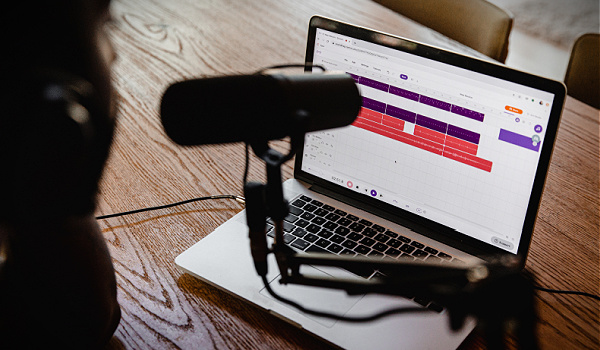Today, over one-third of Americans listen to podcasts regularly, so it makes sense that a growing number of financial advisors are exploring ways to integrate this tool into their marketing arsenal. If you’re among them, you’ll be happy to hear that getting started is easier than you might think.
Thanks to the wonders of technology, you don’t need to rent a sound booth or invest in costly recording equipment to sound like a professional. Rather, it’s quite possible to launch your podcast career affordably – and conveniently – in the comfort of your own home. Check out the following tips from TIFIN Clout, a digital marketing solution for financial advisors, on how to get started.
First, The Basics
Consider how you’ll brand your podcast. Choose a clever name that also makes your subject matter clear. Create an editorial calendar – which can be as simple as an Excel spreadsheet – where you can write down enough topics that you can provide consistent content as you seek to grow your audience.
While there’s no perfect cadence for releasing podcasts, pick a schedule you can stick to so your subscribers and followers know what to expect. It’s the same with content length – there’s no magic number but the general guideline is to make sure you have enough time to do a good job talking about your subject but not drone on so long that you’ll see too much drop-off. The more personality you infuse into your podcast and the more timely topics you cover with compelling guests, the longer people are likely to listen.
Once you’re ready to record, you’ll want to invest in the following key technical elements:
1. Soundproofing
The first step in building a podcast set-up is designating a specific “podcast room” in your home – a place you can ideally close off from the rest of the house and record your podcast uninterrupted. If you don’t have a full room, you can even use a closet or the corner of a common room. The key is to choose a spot where you can record uninterrupted.
Once you find the ideal space, aim to reduce the echoes in that room by implementing some basic soundproofing measures. If you want to soundproof like a professional, consider installing bass traps to the corners of your room to prevent sound from bouncing around. From there, you can look at installing some foam panels to all your flat surfaces to help with sound absorption.
If you’re not quite ready to completely outfit a room with soundproofing materials, consider adding additional furniture or rugs to absorb the sound, or even temporarily drape a blanket over your recording area.
2. The right mic
While soundproofing can help improve your podcast’s overall sound quality, the right mic is arguably more important. The thing is, navigating this terrain can be a little overwhelming, as there are tons of different types of microphones on the market.
To help narrow your search, consider focusing on dynamic microphones over condensers. The latter are more sensitive and better suited to recording music over spoken word. A dynamic microphone will make it easier to edit out background noise once you’re done recording.
You may also want to consider a USB setup over an XLR setup. Not only are USB microphones less expensive, but they plug directly into your computer, without the need for an interface or mixer.
3. Top-Notch Headphones
A good pair of studio headphones is essential to monitor the recording of your podcast and for editing. Not only do they prevent the mic from picking up additional sounds coming from your speakers or earbuds, but they offer clearer sound that can come in handy when completing the final mix.
4. Podcast Software
Once you have all the necessary hardware to start recording your podcast, it’s time to decide on the right software. First up: recording software. This is how you’re going to get the conversation from your mic to your computer.
While there are tons of recording software options on the market, a good (free) program is Audacity. Not only is it an easy-to-use recording program fit for both PC and Mac computers, but it allows you to edit your podcasts as well.
After the recording is done, you’ll also need the right editing software. In this phase of the journey, you’ll create your intro and outro, trim your content, edit out distractions and unwanted noise, and add music and fade between tracks.
Enhance Your Podcast’s Marketing Power
Having a professional-sounding podcast – with the right equipment, engaging scripts, and interesting guests – is one way to introduce yourself (and your services) to a broader audience, but it’s not enough to grow your business on its own.
To convert your listeners into clients, make sure to promote your podcast across multiple channels; maintain a consistent publishing schedule; and effectively measure your leads, prospects, and client activity. It’s critical to have a clear call to action as to where listeners can go to learn more about your practice.








